Lakes in the United States offer an array of recreational activities that appeal to nature enthusiasts and adventure seekers alike. Picture yourself engaging in thrilling watersports on vast, sparkling waters, where sailing, boating, and fishing are popular pursuits.
Lakeside camping provides a unique opportunity to connect with nature, allowing you to wake up to serene waters and lush surroundings. These lakes are not just about water-based activities; they also offer biking routes, providing a different perspective of the stunning landscapes.
Many lakes are surrounded by vibrant local communities, adding to the experience with events, festivals, and various land-based activities. Whether it’s the peace of a quiet cove or the excitement of a bustling lake scene, these beautiful lakes in the United States promise memorable experiences for every visitor.
Most Beautiful Lakes in the United States
Echo Lake, New Hampshire

Echo Lake, New Hampshire
Echo Lake, nestled in New Hampshire, lies at an elevation of 1,931 feet. This picturesque lake, surrounded by the stunning views of the White Mountains, offers a serene and peaceful retreat.
It’s a favorite among families and nature enthusiasts for its clear, calm waters ideal for swimming and kayaking. The lake is encircled by a scenic trail, perfect for leisurely walks or picnics.
What makes Echo Lake truly special is its ability to provide a tranquil escape while being easily accessible. Whether you’re looking to bask in the sun on its sandy beach or explore the surrounding natural beauty, Echo Lake is a little slice of paradise in the heart of New Hampshire.
Yellowstone Lake, Wyoming
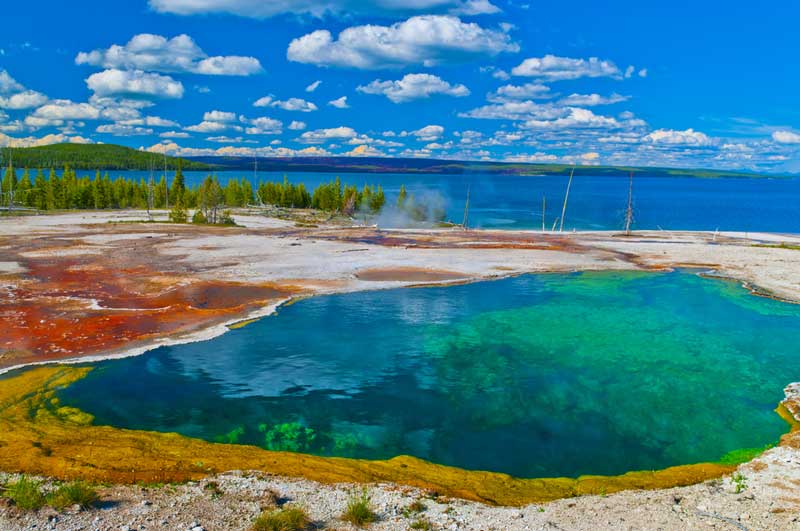
Yellowstone Lake, Wyoming
Perched at an elevation of 7,733 feet above sea level, Yellowstone Lake proudly stands as the largest high-elevation lake in North America. This expansive body of water stretches approximately 20 miles in length and 14 miles in width, encompassed by a magnificent 141 miles of shoreline.
The lake’s vast surface area, covering about 132 square miles, freezes over completely each winter, only to thaw around late May or early June. But beware, the lake’s average water temperature hovers around a chilly 41°F (5°C), making swimming quite an invigorating experience!
For fishing enthusiasts, Yellowstone Lake is a paradise, boasting the largest population of wild cutthroat trout in North America. The geological wonders beneath the lake mirror Yellowstone’s terrestrial marvels, including underwater geysers, hot springs, and deep canyons, making it a spectacular natural phenomenon.
Lake Willoughby, Vermont
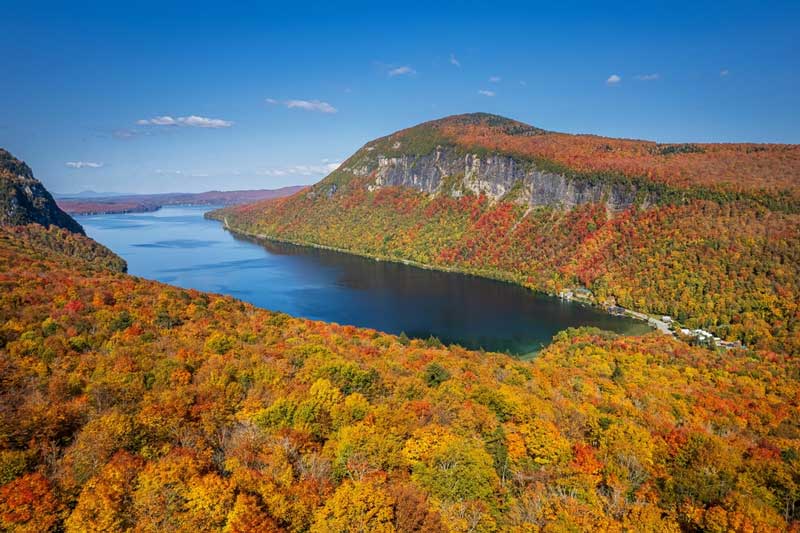
Lake Willoughby, Vermont
Nestled in Vermont’s scenic Northeast Kingdom, Lake Willoughby is a glacially-formed wonder, flaunting depths over 320 feet, making it one of Vermont’s deepest. Elevated at around 1,640 feet, this lake presents an awe-inspiring sight with Mount Pisgah and Mount Hor gracefully flanking its crystalline waters.
Renowned for its pristine clarity and chilly temperatures, Lake Willoughby invites visitors to indulge in refreshing swims, although the waters remain quite brisk!
The area is a nature enthusiast’s playground, offering a plethora of activities. You can embark on hiking adventures in Willoughby State Forest, tackle challenging trails like Moose Mountain, or enjoy the serene views from Mount Pisgah.
The state forest abounds with various trails, ensuring something for everyone, whether seeking a strenuous hike or a tranquil walk. For a blend of thrill and scenic beauty, don’t miss out on the natural waterslides flowing into the lake, which turn into stunning ice walls in winter, attracting ice climbers.
Flathead Lake, Montana
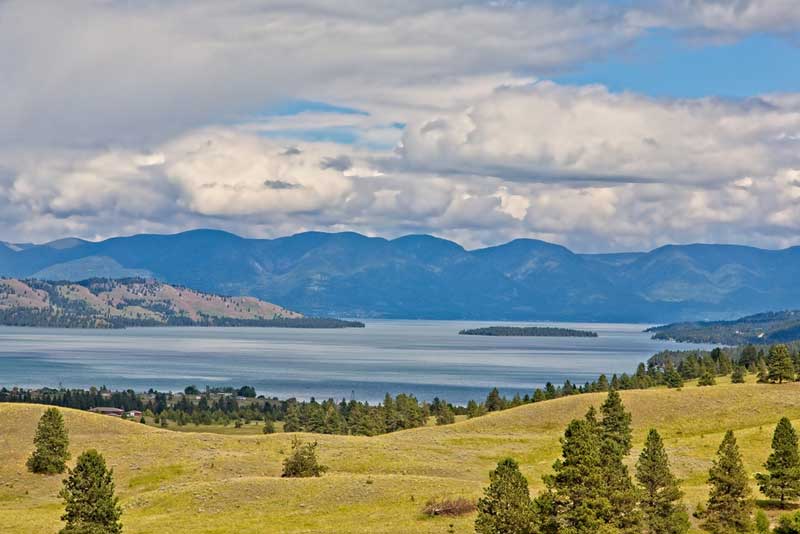
Flathead Lake, Montana
Flathead Lake in Montana, the largest natural freshwater lake west of the Mississippi in the contiguous United States, is an oasis of tranquility and natural beauty.
It lies at an elevation of about 2,900 feet above sea level and spans an impressive 197 square miles. With a maximum depth of 370.7 feet, Flathead Lake is not just large but also deep and clear.
Surrounded by wild nature, this lake is a paradise for outdoor lovers. Whether you’re into fishing, boating, or simply enjoying a peaceful day by the water, Flathead Lake has it all.
Its waters are home to numerous fish species, while the surrounding areas are great for wildlife spotting. The lake is a central point for exploring the nearby wilderness areas and national parks, offering endless opportunities for adventure and relaxation in one of the most beautiful settings in the United States.
Lake George, New York
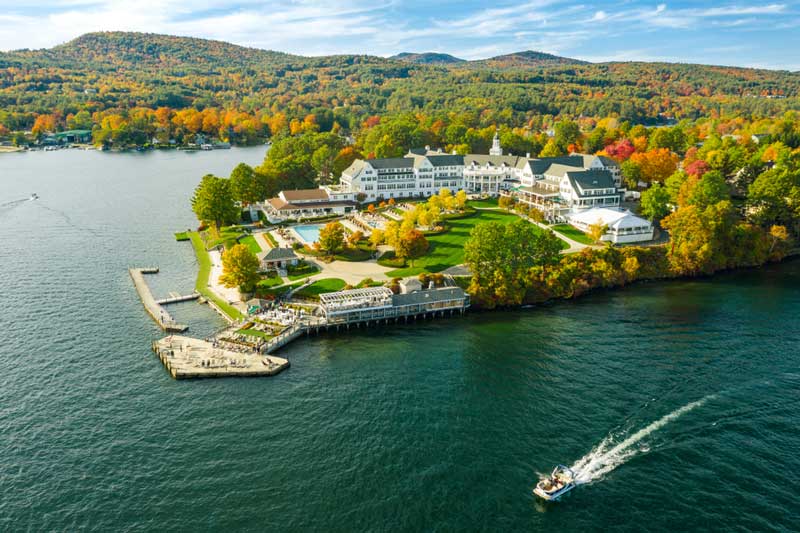
Lake George, New York
Nestled at the southeast base of the Adirondack Mountains, Lake George, New York, is a gem often hailed as “The Queen of American Lakes.” This lake, part of the St. Lawrence watershed, stretches over a scenic 32 miles and varies between 1 to 3 miles in width.
Surrounded by magnificent mountains such as Black Mountain and the Tongue Mountain Range, Lake George sits at an elevation of approximately 320 feet above sea level. It’s not just its size that’s impressive; the lake’s deepest point dives to 196 feet, nestled between Dome Island and Buck Mountain.
The area around Lake George is steeped in history and natural beauty. The lake has over 170 islands, with camping opportunities available on many of them.
For those interested in aquatic life, the lake is a habitat for diverse species like bass, trout, and perch. The Lake George area is also a haven for activities like boating, hiking, and exploring historical sites, reflecting a rich tapestry of past and present.
Caddo Lake, Texas and Louisiana
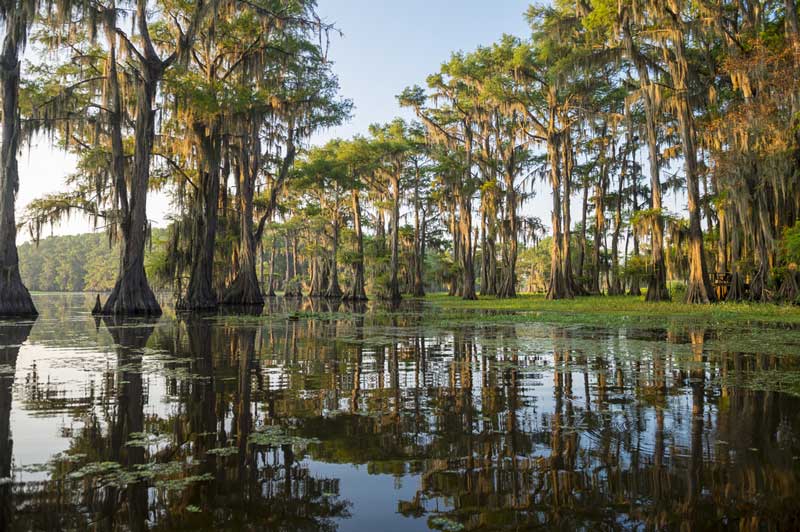
Caddo Lake, Texas and Louisiana
Caddo Lake, sprawling over 26,800 acres, is a shared wonder of Texas and Louisiana. It’s not your typical lake; it’s a labyrinth of waterways, with bayous and cypress thickets creating a mysterious, swampy forest.
The lake’s history is as intriguing as its landscape, believed to have formed either from an earthquake related to the 1812 New Madrid earthquake or by the blockage caused by the Great Raft, a massive log jam.
The rich biodiversity of Caddo Lake includes alligators, river otters, and numerous bird species. It’s not just about the wildlife; the lake’s preservation efforts are significant, being protected under the Ramsar Convention for its valuable wetlands.
Whether you’re canoeing through its shaded waters or fishing, Caddo Lake offers an enchanting escape into nature’s embrace.
Lake Superior, Minnesota, Michigan, and Wisconsin
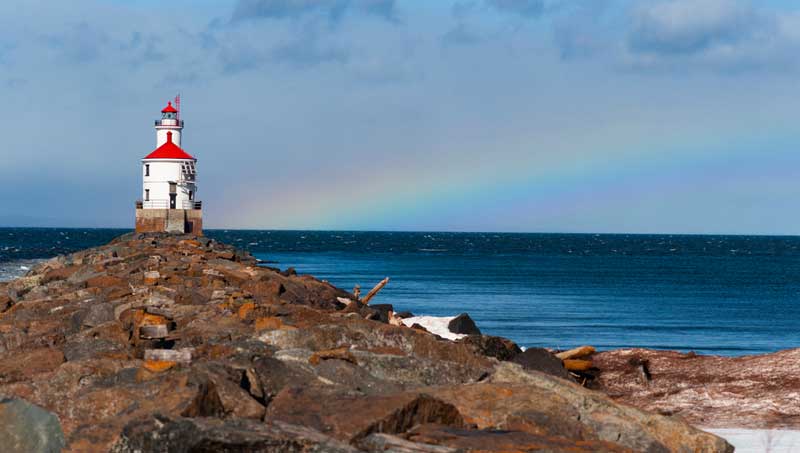
Lake Superior, Minnesota, Michigan, and Wisconsin
As the largest of the Great Lakes, Lake Superior boasts a stunning landscape spread across Minnesota, Michigan, and Wisconsin. With its expansive coverage, this lake touches numerous state borders and holds the title of the world’s largest freshwater lake by surface area.
Lake Superior sits majestically at an elevation of 600 feet above sea level and reaches a remarkable depth of over 1,300 feet. It is more than just a large body of water; it’s an ecosystem teeming with life, supporting numerous species of fish and birds.
The lake’s shores are lined with lighthouses, quaint towns, and numerous parks, making it a haven for outdoor enthusiasts. From serene hikes to thrilling water sports, there’s something for everyone.
Lake Santeetlah, North Carolina
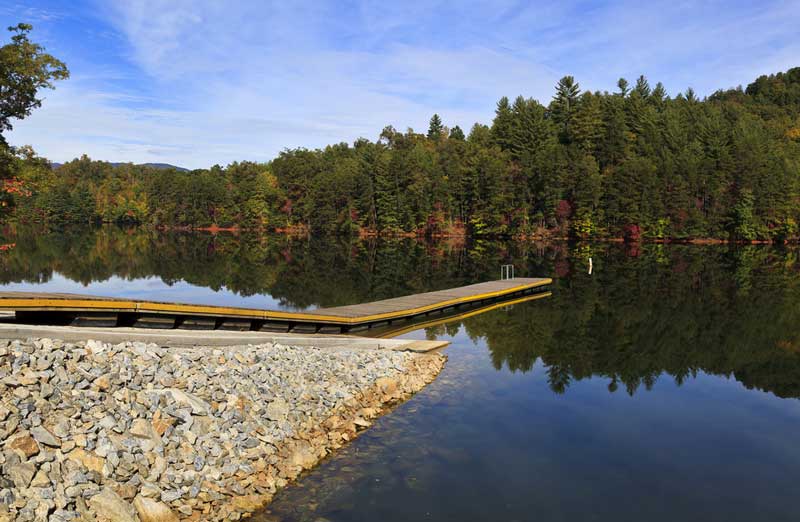
Lake Santeetlah, North Carolina
Nestled in the heart of the Cheoah District of the Nantahala National Forest, Lake Santeetlah in North Carolina is a hidden treasure. Formed in 1928 and primarily surrounded by national forest, the lake spans an impressive 76 miles of shoreline.
It offers a serene escape for nature enthusiasts and those seeking peace. Visitors can enjoy fishing for species like bass, walleye, and trout, or embark on hiking trails that lead to the Appalachian Trail. The lake’s rustic charm is enhanced by over fifty primitive campsites dotting its banks, providing a true wilderness experience.
These sites, complete with picnic tables and fire rings, don’t require permits or fees. Lake Santeetlah is not just about its aquatic allure; it’s close to the Joyce Kilmer Memorial Forest, a preserved old growth forest, adding to its natural splendor.
Lake Tahoe, California and Nevada
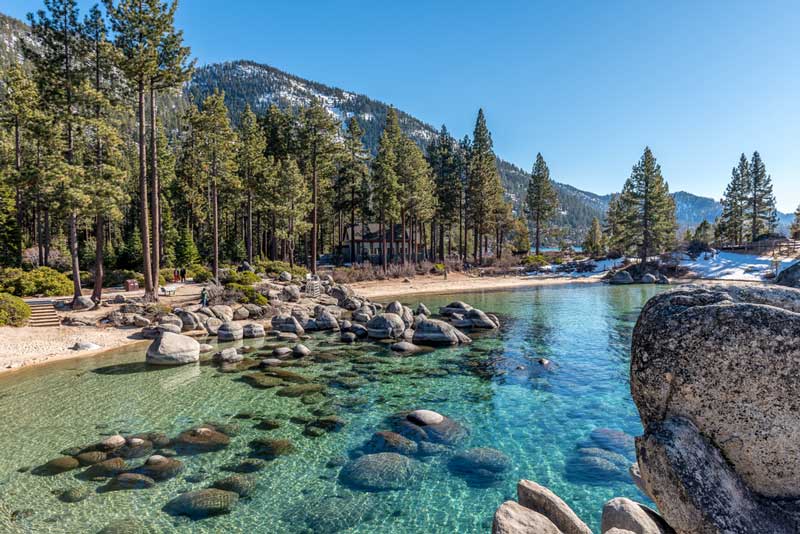
Lake Tahoe, California and Nevada
Straddling the border of California and Nevada, Lake Tahoe is a large freshwater lake known for its clear waters and panoramic mountain backdrop. It sits at an elevation of 6,225 feet in the Sierra Nevada Mountains.
Lake Tahoe is the second deepest lake in the U.S., reaching depths of 1,645 feet. It’s a year-round destination; in summer, the lake is a hub for water sports, hiking, and biking, while in winter, it transforms into a skiing and snowboarding paradise.
The surrounding areas are dotted with ski resorts, making it a popular winter sports destination. The lake’s 72-mile shoreline offers a mix of sandy beaches and rocky coves, providing ample opportunities for relaxation and exploration. Whether you’re into active outdoor adventures or just want to soak in the natural beauty, Lake Tahoe caters to all.
Mono Lake, California
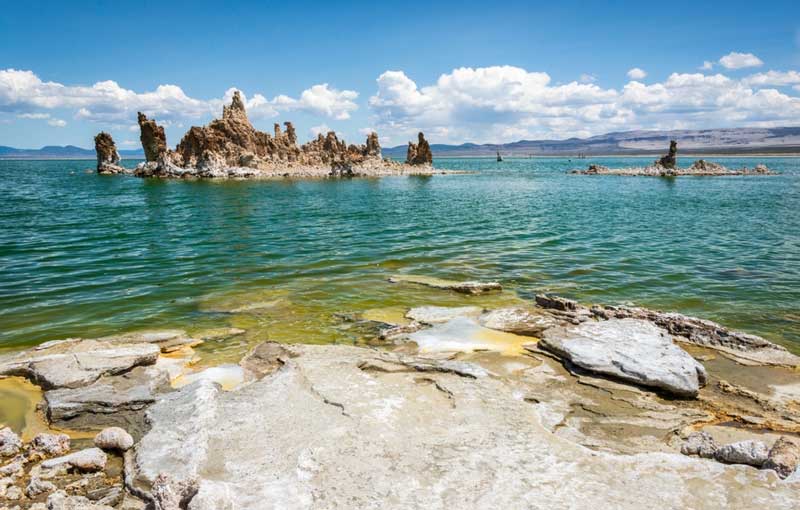
Mono Lake, California
Mono Lake, sitting at an elevation of 6,382 feet in California, is a unique saline soda lake. Famous for its otherworldly tufa towers – calcium-carbonate spires and knobs formed by the interaction of freshwater springs and alkaline lake water – Mono Lake is a geologist’s dream.
The lake’s ecosystem is specialized and includes brine shrimp and alkali flies, providing a feast for migrating birds. Despite its high salinity and alkalinity, the lake is a vital habitat for millions of migratory birds.
Mono Lake’s surreal beauty, especially at sunrise or sunset, when the tufa towers cast long shadows on the water’s surface, is mesmerizing. It’s a place that not only tells the tale of geological wonders but also speaks of the importance of ecological balance and preservation.
Crater Lake, Oregon
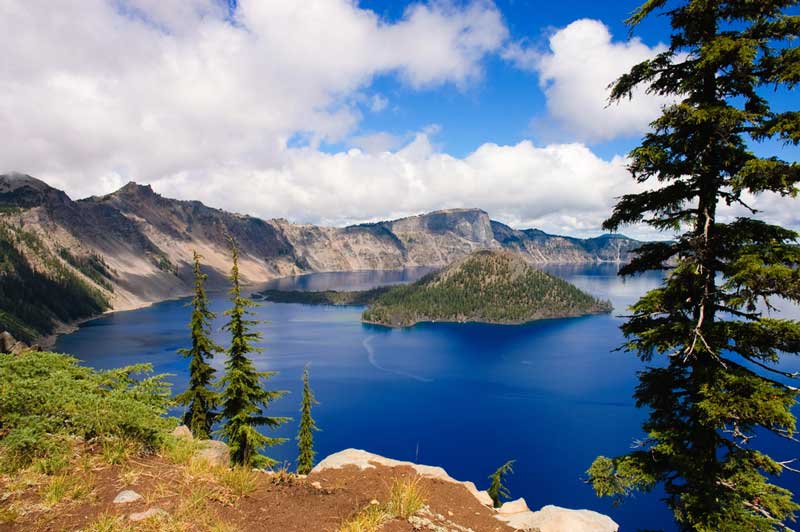
Crater Lake, Oregon
At an elevation of 6,178 feet, Crater Lake in Oregon is a majestic sight. It holds the distinction of being the deepest lake in the United States, with depths reaching 1,943 feet. Formed over 7,700 years ago by the collapse of a volcano, Crater Lake is renowned for its deep blue color and water clarity.
The lake is within Crater Lake National Park, which offers numerous activities like hiking, bird watching, and stargazing. In the winter, the park becomes a snowy wonderland, perfect for snowshoeing and cross-country skiing.
The lake itself does not have any inlets or outlets, which contributes to its purity and deep blue color. It’s a sight not to be missed, with the surrounding cliffs and the famous Phantom Ship island enhancing its mystical allure.
Final Thoughts
The United States is a treasure trove of natural wonders, and its lakes are no exception. Each one offers a unique experience, from mysterious bayous to serene, crystal-clear waters, surrounded by breathtaking landscapes.
These natural beauties provide not just scenic vistas, but also a haven for wildlife, a playground for outdoor activities, and a peaceful retreat from the hustle and bustle of daily life.
They hold a special place in the heart of the country, symbolizing the diverse and pristine beauty of the American wilderness. Exploring these lakes means connecting with nature, finding adventure, and creating memories that last a lifetime.
